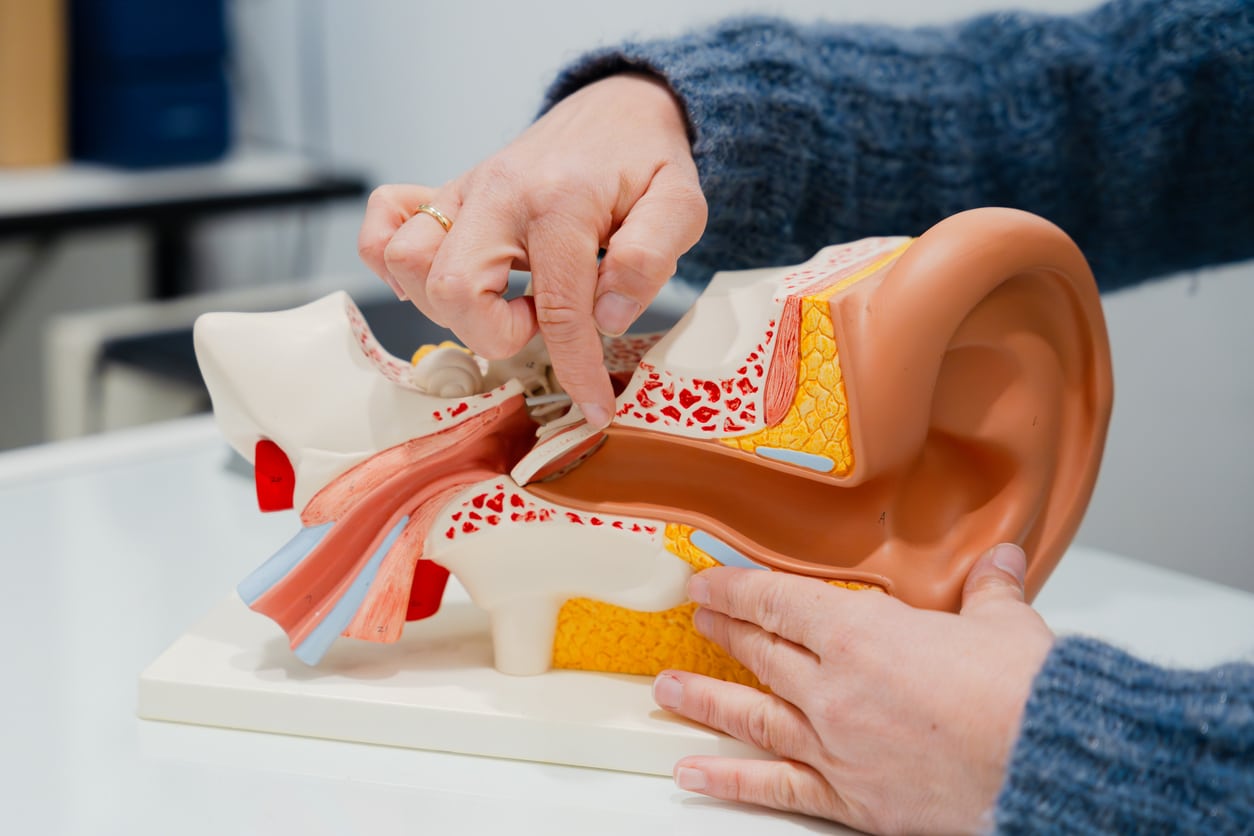Being diagnosed with hearing loss can be overwhelming, but understanding the type and cause of your condition is the first step toward effective treatment. Conductive hearing loss, which affects the outer or middle ear, is one of the three main types of hearing loss, alongside sensorineural and mixed. Let’s explore the common causes of conductive hearing loss and how hearing aids can significantly improve life for those with permanent cases.
What Causes Conductive Hearing Loss?

Conductive hearing loss arises when something blocks the path of sound through the outer or middle ear, similar to how covering the speaker of your TV will muffle the sound. A few of the most common causes include foreign objects in the ear, ruptured eardrum, earwax blockage and ear infection.
Foreign Objects in the Ear
If you have kids, you’re probably all too familiar with the fact that they love to stick objects in their ears, mouths and noses. If your child’s next Jack’s Café dinner ends up in their ears, conductive hearing loss is a possibility. Luckily, removing the object should clear up muffled hearing.
Ruptured Eardrum
A hole or tear in the eardrum can prevent sound waves from being transmitted correctly and make the ear more susceptible to infections, leading to fluid buildup and blockages. Most ruptured eardrums will heal independently, but severe cases require medical intervention. In cases of a severe ruptured eardrum, your ENT may recommend a patch or surgery to heal the tear and restore hearing.
Earwax Blockage
While most earwax exits the ear on its own, carrying with it dirt and bacteria, there are cases where it becomes too hard or built up to wash away naturally. When your ear is clogged with wax, sound transmission is muffled.
You shouldn’t try to remove earwax blockages on your own, as unsafe removal can lead to damage. Instead, schedule an appointment with your ENT provider for a cleaning.
Ear Infection
Viruses or bacteria can infect the space behind the eardrum, leading to inflammation and fluid buildup that block sound transmission. While ear infections are most common in children, anyone can get them. Ear infections usually clear on their own, but prolonged infections may require antibiotics or professional cleanings.
Other potential conductive hearing loss causes include otosclerosis, swimmer’s ear, Eustachian tube dysfunction, physical trauma, benign tumors and congenital malformations of the outer or middle ear.
What Are Your Treatment Options?
Many cases of conductive hearing loss are temporary and resolve once the underlying cause is treated. If conductive hearing loss is permanent, hearing aids are a valuable treatment tool. These devices work by collecting, amplifying and transmitting sounds from your environment directly to your ears to improve communication and reconnect you to your loved ones.
You don’t have to navigate hearing loss alone. Contact Speech & Hearing Associates today to schedule an exam with one of our trusted specialists.